Reflexology is a simple, effective, and natural way to maintain good health while reducing stress and tension. In this article you will learn what reflexology is, the wellness benefits of reflexology, and how you can use reflexology to feel calm, clear, and connected.
About Reflexology
According to the Reflexology Association of America, “Reflexology, an integrative health practice, maps a reflection of the body predominately on the feet, hands, and outer ears. It uses unique manual techniques to deliver pressure to neural pathways assisting the body to function optimally.”
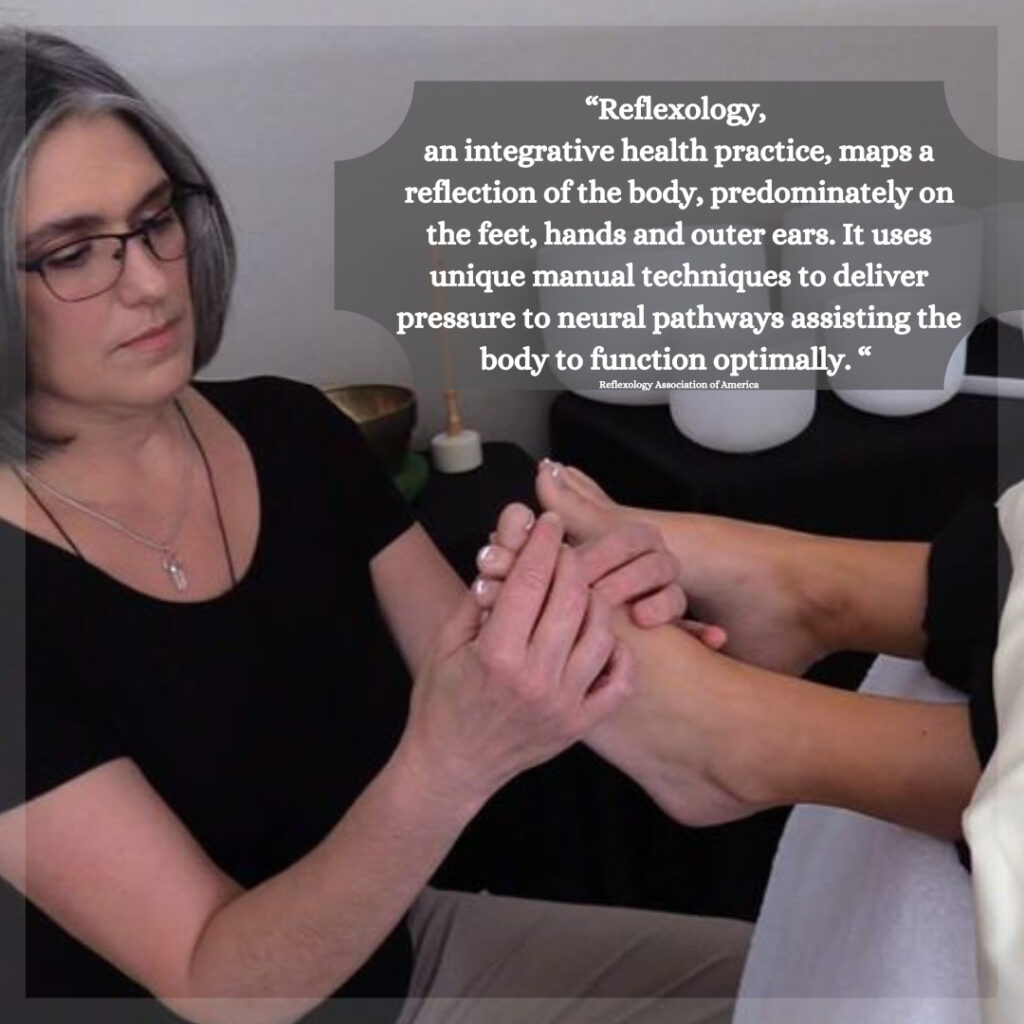
Reflexology encourages deep relaxation, improves blood supply, and promotes the unblocking of nerve function.
As it exists today, the practice of reflexology can largely be credited to Eunice Ingham, a physiotherapist. She developed her ideas in the early 1900’s based on the work of Dr. William H. Fitzgerald.
Dr. Fitzgerald was a New England physician. After being exposed to a Chinese method of health care, he began to believe that the body could be divided into 10 equal vertical parts he called zones, and that anything occurring in part of a zone influenced everything else in the zone. Working with this theory and tools like rubber bands, clothes pins, and clips on the hands and feel he found that he could deaden pain in the other parts of the body, specifically areas of an identified zone.
Ingham further refined this Zone Theory and used it to create a method of addressing imbalances in the entire body through the feet and hands. Ingham traveled extensively to share this technique, establishing the International Institute of Reflexology to teach her methods. Her work is outlined in the book Stories the Feet Can Tell Thru Reflexology/Stories the Feet Have Told Thru Reflexology.
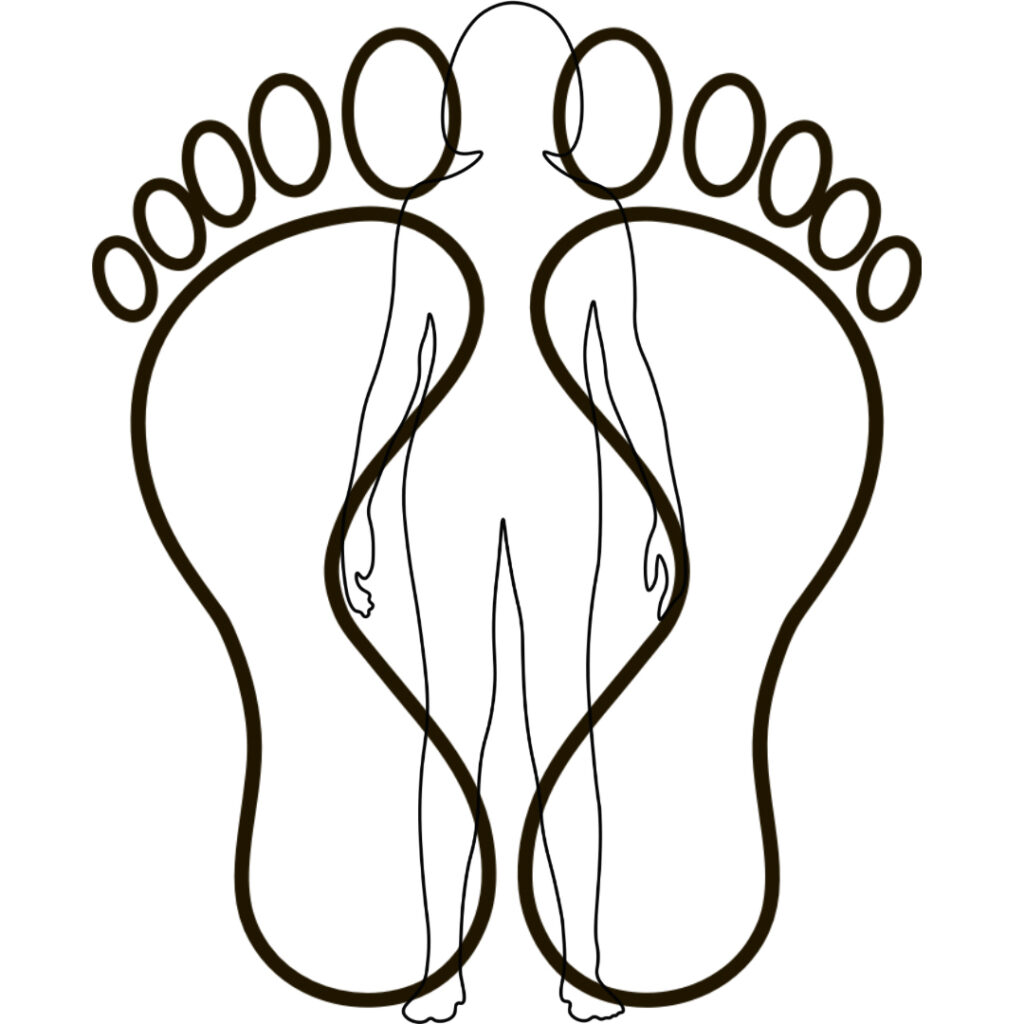
There are many others throughout the world who have influenced the development of the modern-day practice of reflexology, and while it has evolved, the original concept of reflexology is not new. A form of reflexology is believed to have been used as a healing art by the ancient Egyptians, information about Zone Theory first appears in print in the 1500’s, and reflexology is a respected complimentary health care practice in many parts of the world. Both Japan and Denmark provide for reflexology in their health insurance coverage.
Because it uses unique techniques and offers specific benefits that reduce stress and tension to help your body reach homeostasis, The National Institute of Health considers reflexology as a standalone modality and a complimentary therapy.
Complimentary therapy is one that is used to support, or compliment, other practices including allopathic medical treatment.
Reflexology is also considered energy work as it addresses the neural pathways, or energetic system, of the body.
While reflexology may sound like massage, it is not massage. Massage manipulates soft tissue on the entire body. Reflexology uses unique techniques to apply pressure on specific reflex points in the hands and feet, and sometimes the ears.
Reflexology is a holistic wellness practice, not an allopathic medical practice. Reflexologists do not diagnose, nor do they prescribe.
The Wellness Benefits of Reflexology
Reflexology has been shown to support those who want to relieve stress, reduce pain, and release anxiety.
The effects of stress on your body can be dramatic. According to the Mayo Clinic, stress can affect your body and your mood. Negative effects of stress on your body include
- Headaches
- Muscle tension
- Chest pain
- Fatigue
- Change in sex drive
- Stomach upset
- Sleep problems
Your mood can reflect stress through
- Anxiety
- Restlessness
- Lack of motivation
- Lack of focus
- Memory problems
- Feeling overwhelmed
- Grumpiness or anger
- Sadness or depression
These changes can influence your behavior and have a negative impact on your relationships.
Just one reflexology session can interrupt the pattern of repetitive stress, with further sessions improving the condition of the body.
Manual therapies have been shown to support the body in producing endorphins, our natural pain reliever.
Specific reflexology studies have shown significant reduction in back pain. The results can be even more dramatic for migraine sufferers.
Other studies have also shown that reflexology is supportive for those recovering from breast cancer.
Participants with depression, anxiety, and sleep disturbances showed significant improvement in their symptoms during this specific study.
Reflexology may be also beneficial for those recovering from strokes, assist in controlling symptoms of multiple sclerosis, and contributing to a measurable reduction in diabetic neuropathy.
According to the American Reflexology Certification Board there have been over 300 research studies on the benefits of reflexology in China alone. Out of 18,000 case studies looking at 64 different illnesses, 95% showed improvement when reflexology was used.
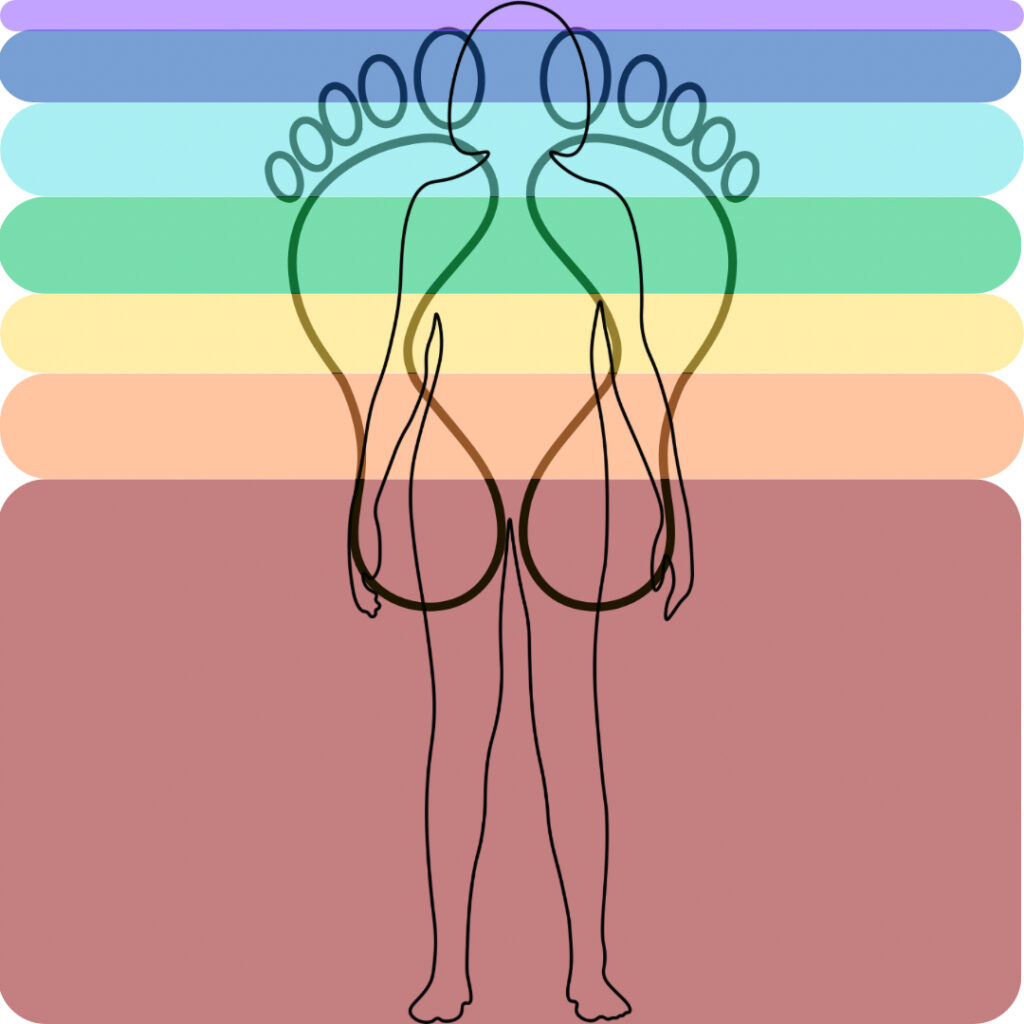
Reflexology also balances the energy centers referred to as the chakra system. Reflexology can be very grounding as it draws your attention downward and stimulates the specific energy centers in your feet. Also, just as all physical parts of the body are represented through reflex points, so are your other energy centers.
While reflexology is a beneficial complimentary therapy, there are still times when it is not appropriate. These include times when you are experiencing:
- Vomiting
- Diarrhea
- Inflammation or skin disease on your feet or hands
- Fever
- Infectious disease
- Foot injury
- Gout
- Bloot clots
If you are in doubt, it is always beneficial to check with your physician to see if reflexology is right for you.
Reflexology for Self-Care
Receiving a professional reflexology session is a positive method of self-care. You can find a reflexologist near you in the directories at Reflexology Association of America or the American Reflexology Certification Board.
There are many schools of thought and specialties in the practice of reflexology. Ask clarifying questions about areas of interest or treatment specialties to find the best reflexologist for you.
When you find the reflexologist that feels like a fit for you, you should expect to complete some intake paperwork asking for your medical history and any medications that you may be taking.
Your reflexologist may work in their home or in an outside office setting.
Their treatment room may hold a reclining chair or a massage table.
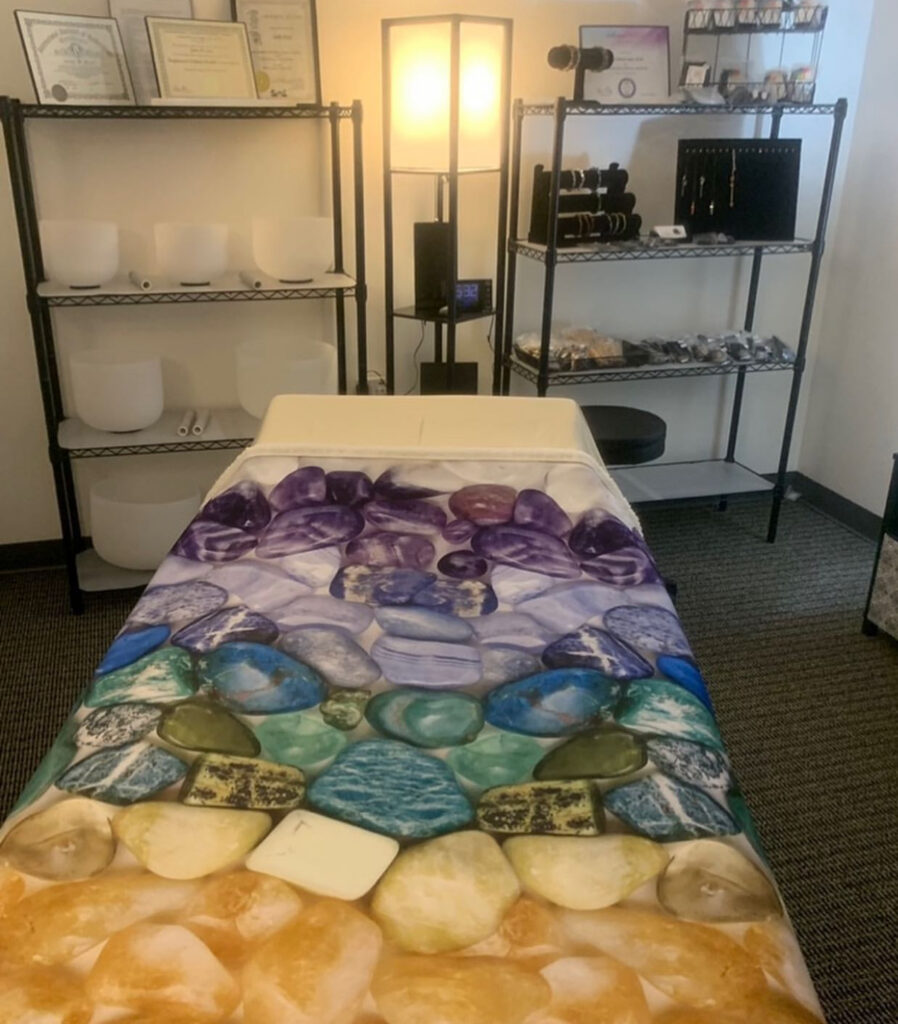
The treatment room lighting may be soft with soothing music, or it may be brightly lit with no music.
Your reflexologist may use lotion or cream, or they may not.
Treatment times vary, typically from 30 to 90 minutes depending on your needs.
To prepare for your reflexology session you should wear comfortable, loose-fitting clothes to promote relaxation and provide your reflexologist with access to your lower legs for foot reflexology, or arms in the case of hand reflexology.
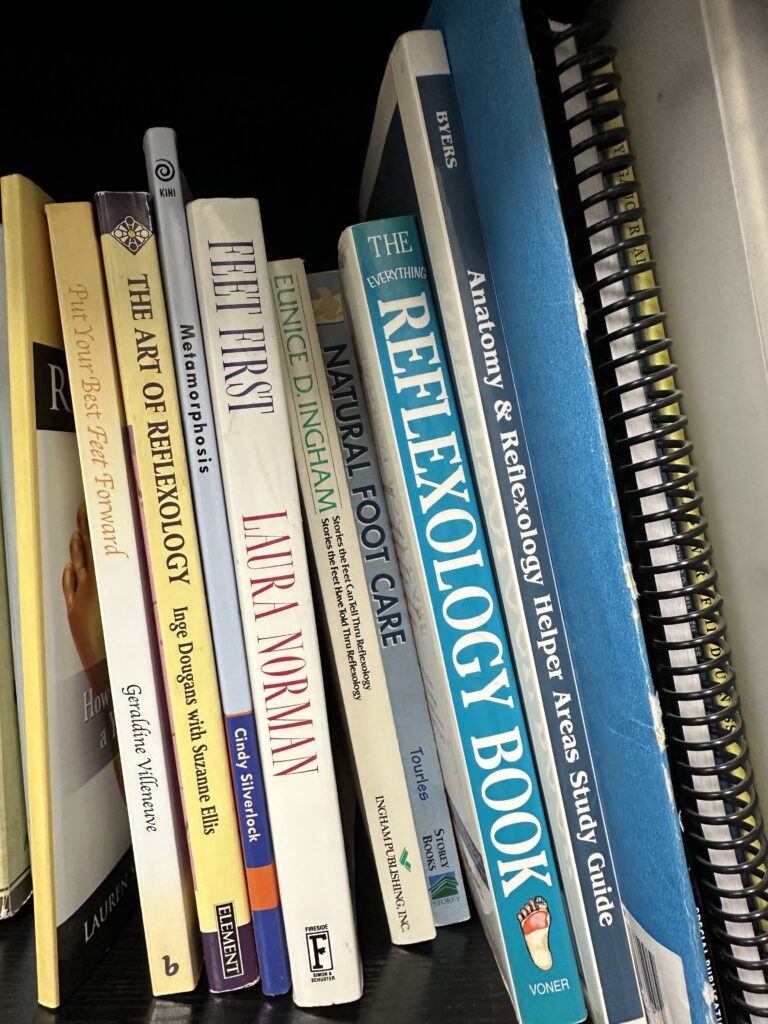
You can also provide some of the benefits of reflexology for yourself if you invest in a book or two to learn basic techniques, some charts, and self-care tools which are readily available. With a little education, you can use reflexology to support yourself in many situations.
Here is one example of how you can use reflexology for yourself. When we get stressed, we tend to tighten inward. This compresses our diaphragm and reduces air flow. This creates a cycle in which we get more stressed, then tighter, get less air which leads to more stress.
Remember that all parts of your body are represented by reflex points on your hands and feet. On your hand, your fingers correspond to your head and neck, and the fleshy area under them corresponds to your chest/breast/lung area. Below are the reflexes that correspond to your diaphragm.
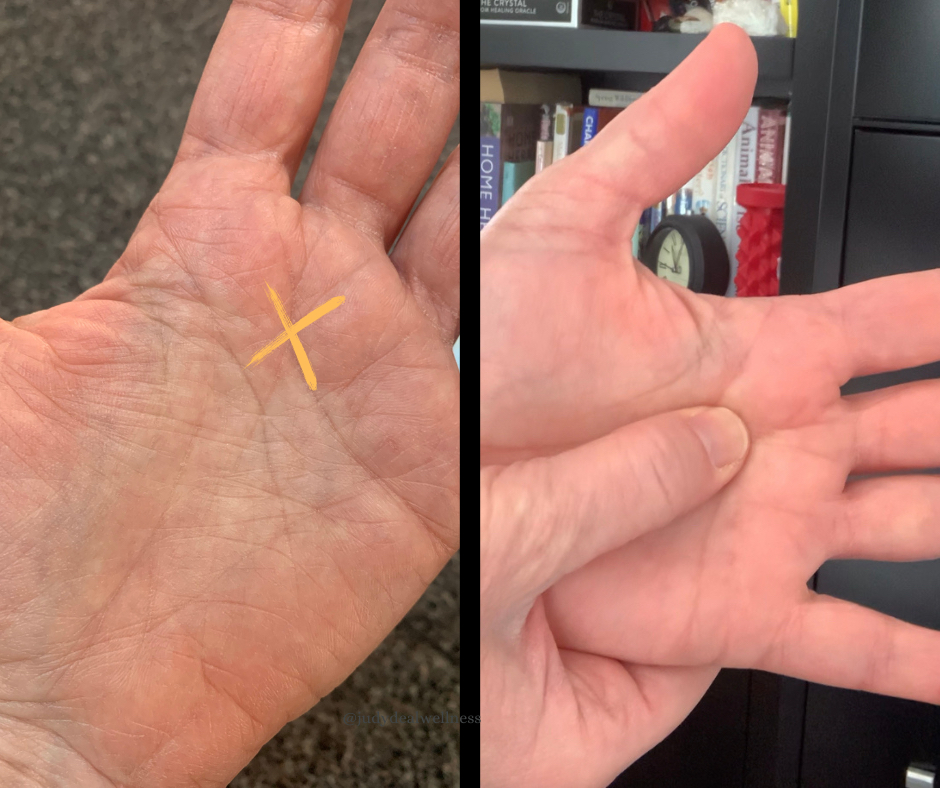
Lift your left hand and turn it so that you can see your palm. Using the thumb of your right hand, gently press around in the area below but between your left index and middle finger until you find a spot that is a little tender. Once you find it, press in gently as you take a deep breath in then, without separating your thumb from your palm, release the pressure as you exhale.
Try doing this three times, pressing in with your inhalation and relaxing the pressure with your exhalation.
With your first breath, you may have noticed your shoulders relax a little. By your third breath, you may have noticed that you were breathing more deeply with more expansion in your chest.
You can do this any time that you feel tight and tense. You may choose to take 5 breaths rather than 3. Each time that you do this process may feel different.
Reflexology self-help can also be used when experiencing sinus pressure and pain by working your fingers or toes using finger walking or rolling techniques.
Affordable and portable reflexology tools can be found in many specialty health food stores, foot health stores, and online. Back pain may be reduced by using a rolling tool or finger techniques along the arch of your foot.
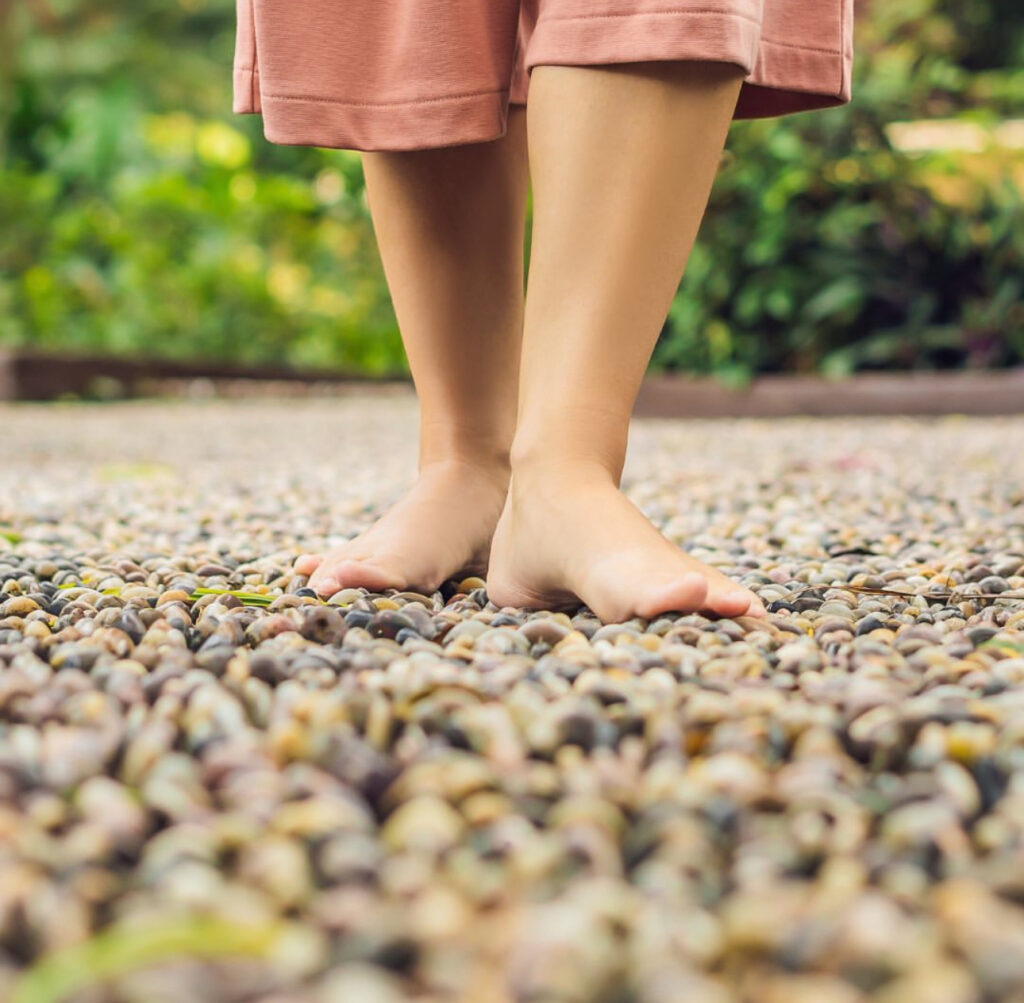
Stimulating your reflex points can be as simple as walking barefoot on a textured surface. If you notice mild tenderness in particular areas, keep walking and see if the stimulation begins to reduce your sensitivity. This shows you that it is working.
Reflexology can help your whole family. It is as beneficial for your companion cats and dogs as it is for you.
Why Choose Reflexology
A reflexology session soothes tired hands and feet, invigorates your entire body, and helps you to maintain the ability to move and function.
Reflexology is a dis-ease preventative and provides a treatment for many health conditions without the use of drugs. It promotes a sense of deep relaxation while supporting the release of pain controlling endorphins.
Reflection
Reflexology is a gentle, non-invasive, stand alone, complimentary therapy.
While the practice continues to evolve, reflexology has existed for many years.
Reflexology is holistic.
Reflexologists do not diagnose, nor do they prescribe.
The practice of reflexology and the benefits that it provides are supported by research.
Local reflexologists can be located using the directories of professional organizations.
You can learn basic reflexology techniques to support yourself, and your family, in a variety of situations.
This article was not written with the assistance of AI. If you would like to see more of this kind of post written by a human, please subscribe.